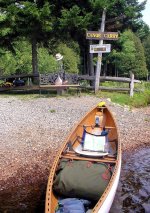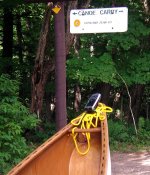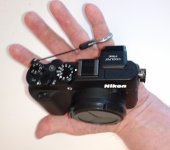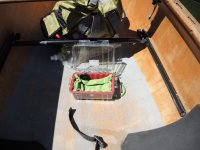Who among us is electric free on a canoe trip? Are any of us brave or comfortable enough to go electric free like our ancestors?
Well, this topic doesn't require such a grand sacrifice. Just name the electrical device you are most likely to want to always keep taking on an canoe trip and the electrical device you are most willing to eliminate.
I don't take that many electric devices, but I suppose the one I'm most likely to want to keep is one of my oldest: my headlamp. I don't usually make fires when I'm alone, so I need some form of light at night. Also, I've long been addicted to reading to get to sleep, and I find a headlamp to be much more useful and safe for that purpose than flames or handheld flashlights. A headlamp is also very small and lightweight to pack.
The device I'm most willing to give up is my compact electric shaver, which I used to always use as a form of ritualistic morning discipline. But now that I've become bearded for the past few years, I don't need that anymore. Sort of a cheat answer, I suppose. Maybe next choice would be my phone. Most of my tripping was done before I ever got a cell phone, and I don't recall ever really needing to use one while on trips since I got one.
Well, this topic doesn't require such a grand sacrifice. Just name the electrical device you are most likely to want to always keep taking on an canoe trip and the electrical device you are most willing to eliminate.
I don't take that many electric devices, but I suppose the one I'm most likely to want to keep is one of my oldest: my headlamp. I don't usually make fires when I'm alone, so I need some form of light at night. Also, I've long been addicted to reading to get to sleep, and I find a headlamp to be much more useful and safe for that purpose than flames or handheld flashlights. A headlamp is also very small and lightweight to pack.
The device I'm most willing to give up is my compact electric shaver, which I used to always use as a form of ritualistic morning discipline. But now that I've become bearded for the past few years, I don't need that anymore. Sort of a cheat answer, I suppose. Maybe next choice would be my phone. Most of my tripping was done before I ever got a cell phone, and I don't recall ever really needing to use one while on trips since I got one.




